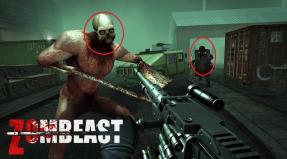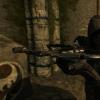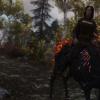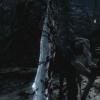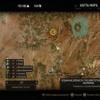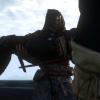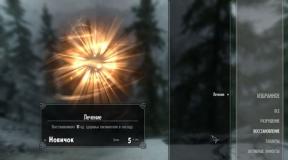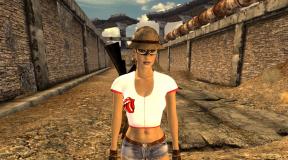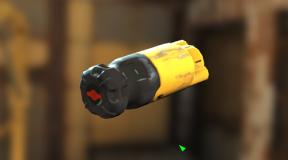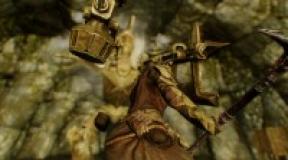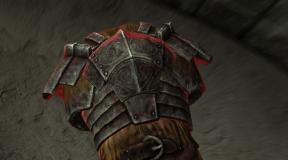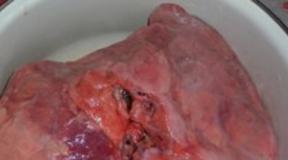Case number ist information 23. Military encyclopedic dictionary
DIRECTIVE OF THE VGK RATE No. 11014 TO THE COMMANDER OF THE TROOPS
ABOUT MEASURES FOR DESTROYING AN ENEMY SOUTH
LAKE VELENCE
January 23, 1945, 24 h 00 min
In order to combine efforts in eliminating the enemy grouping,
broke through to the Danube south of Lake Velence, the Headquarters of the Supreme High
mandate orders:
1. To the commander of the troops of the 2nd Ukrainian Front to transfer from 12.00
01.24.1945, the 23rd Tank Corps was part of the troops of the 3rd Ukrainian Front
and the 104th page corps (three page divisions), ferrying them to the west bank
Danube. The transferred hulls provide at least 1 bq of ammunition, 2
gas stations of fuels and lubricants and 5 days of food supplies.
2. Preparing and carrying out a strike from the area northeast of the lake. Velence
in the direction of Sharashda (in accordance with the Directive of the Bet of 22.01
No. 11013) 2 to assign to the commander of the troops of the 3rd Ukrainian Front.
3. Set from 24.00 on 01/25/1945 the next spreading line between the 2nd
and the 3rd Ukrainian fronts: to Kecskemet - the same, then Lajosmizhe,
the southern tip of the Chepel island, the eastern bank of the river. Danube, Budapest,
the eastern bank of the station [Aritsa] Endrei-Dunaag and further along the river. Danube (all points
for the 2nd Ukrainian Front inclusive).
4. To the commander of the troops of the 2nd Ukrainian Front, withdraw to the reserve
front of Trofimenko's 27th army, consisting of at least two bldg. corps (six
sd) to the area south of Budapest, entrusting it with the defense of the island of Csepel.
The transfer of 27 A divisions to Chepel Island to begin immediately.
5. The commander of the troops of the 3rd Ukrainian Front should not be removed from the island
Chapel 155 Rifle Division before being replaced by units of the 2nd Ukrainian Front.
6. To inform about the given orders.
I. STALIN
A. ANTONOV
TsAMO. F. 148a. Op. 3763. D. 213. L. 15, 16. Original.
1 S. K. Timoshenko
2.
3.
1.
1.
2.
3.
1.
2.
3.
4.
"By January 27, the Russian offensive had reached unprecedented rates. The day of catastrophe was approaching faster and faster. To the southwest of Budapest, the Russians launched a counteroffensive. The remnants of the German garrison in the Hungarian capital fought fierce battles. ....
On the same day, the transfer of the 6th Panzer Army to the Eastern Front began. As already mentioned, Hitler, returning to Berlin, ordered to go on the defensive on the Western Front. At the same time, he developed his own plan for the use of all troops arriving from the west on the Eastern Front. I proposed to Hitler to transfer all his forces to the area of eastern Berlin, divide them into two groups and concentrate in the area of Glogau (Glogow), Cottbus and in Pomerania east of the Oder. This would make it possible to counterattack the forward units of the enemy deeply wedged into our defense system and smash them while they are still weak and while our eastern defensive fortifications hold out, preventing the enemy from organizing the supply of ammunition and food to this sector of the front. However, Hitler insisted on his plan - to use the main forces of these units not for the defense of Germany, in particular the capital, but for an offensive in Hungary. Jodl expected to transfer the first corps there within two weeks. However, it took several weeks for the deployment to be fully completed. Until the beginning of March, there was nothing to think about an offensive. .... "
“On January 24, under the same increased secrecy, the SS Panzer Divisions began to leave Central Germany. First, the SS Leibstandarte division arrived in the vicinity of Vienna via Dresden and Prague. when the transportation of all SS formations was completed, “misleading measures continued to be carried out to the east of Berlin.” However, the Soviet command already knew that the 6th Panzer Army was heading “somewhere to the East,” since the echelons with tanks were attacked by the Soviets. pilots between Cottbus and Guben. "...
"In the report on the events of the second half of January 1945 compiled for the headquarters of the Wehrmacht operational leadership, Colonel Meyer-Detring noted the following:
“The position of Army Group South is characterized by a successful offensive launched by separate formations northeast of Lake Balaton. Yesterday (January 28), an offensive began on the southern flank. The concentration of enemy forces for the start of an offensive on the northern bank of the Danube in the direction of Bratislava is not excluded. Two tank corps are being brought to the Hungarian region from the west, and the 356th Infantry Division has already partially arrived from the southwest. It is supposed to crush the southern flank of the Russian troops with these forces, which will free up their own divisions from near Budapest. In the course of this operation, about twelve divisions may be released, which will be able to take part in the battles on the Eastern Front. "
From the memoirs of Marshal of the Soviet Union
Zhukov G.K. Memories and Reflections. M. Olma-Press. 2002
“On January 26, when it became clear that the enemy would not be able to hold back our offensive on the fortifications on the outskirts of the Oder, we made a preliminary proposal to the Headquarters, the essence of which was as follows.
By January 30, the front forces should reach the Berlinchen (Barlinek) -Landsberg (Gorzow-Wielkopolski) -Grez (Grudzisk) line, pull up the rear, replenish supplies and continue the offensive in the morning of February 1-2 in order to force the Oder on the move.
In the future, it was supposed to develop a swift offensive in the Berlin direction, concentrating the main efforts around Berlin from the northeast, north and northwest.
On January 27, the Headquarters of the Supreme Command approved this proposal. ....
In this regard, the front command gave the front troops the following orientation:
“To the military councils of all armies, the commanders of the branches of the armed forces and the chief of the rear of the front. I am giving you approximate calculations for the next period and a brief assessment of the situation:
1. The enemy in front of the 1st Belorussian Front does not yet have any large counterstrike groupings.
The enemy does not have a continuous defense front either. He is now covering certain areas and in a number of sectors is trying to solve the problem of defense by active actions.
We have preliminary information that the enemy has withdrawn four tank divisions and up to 5-6 infantry divisions from the Western Front and is transferring these units to the Eastern Front. At the same time, the enemy continues to transfer units from the Baltic States and East Prussia.
Apparently, the enemy in the next 6-7 days will concentrate the troops brought from the Baltic States and East Prussia on the Schwedt-Stargard-Neustettin line in order to cover Pomerania, prevent us from reaching Stettin and prevent our exit to the Pomeranian Bay.
The enemy is apparently concentrating a group of troops transferred from the West in the Berlin area with the task of defending the approaches to Berlin.
2. The tasks of the front troops are to consolidate the achieved success by active actions in the next 6 days, pull up everything that is lagging behind, replenish stocks of up to 2 refueling stations, up to 2 ammunition sets and take Berlin with a swift rush on February 15-16.
When consolidating the achieved success, that is, from 4 to 8 February, it is necessary:
a) 5, 8, 69, 33rd armies to seize bridgeheads on the western bank of the r. Oder. At the same time, it is desirable for the 8th Guards and 69th armies to have one common bridgehead between Kustrin and Frankfurt. If possible, it would be good to connect the bridgeheads of the 5th and 8th armies;
b) the 1st Army of the Polish Army, 47, 61, the 2nd Tank Armies and the 2nd Cavalry Corps must push the enemy back beyond the Ratzebur-Falkenburg-Stargard-Altdam-Oder line. Then, leaving the screen until the armies of the 2nd Belorussian Front approach, regroup on the river. Oder for a breakthrough;
c) On February 7-8, it is necessary to complete the liquidation of the Poznan-Schneidemühl enemy group;
d) the means of strengthening for a breakthrough will remain basically the same as the armies have now;
e) tank forces and self-propelled artillery to complete current and medium repairs by February 10 and put the materiel into operation;
f) aviation to complete the deployment with at least 6 refueling stations at the aerodromes;
g) to the rear of the front, the army and military rear, by February 9-10, be fully prepared for the decisive stage of the operation.
Zhukov.
Telegin. Malinin "."
1.
2.
3.
1.
2.
3.
4.
1.
2.
3.
4.
5.
1.
2.
3.
4.
1.
2.
1.
2.
1.
1.
2.
3.
1.
2.
3.
4.
1.
2.
3.
1.
2.
3.
From the memoirs of the former chief of the General Staff of the High Command of the German Land Forces:
Guderian G. Memories of a Soldier. Smolensk, Rusmch, 1999.
"In the first days of February, our position both on the Eastern and Western fronts became fatal. ...
And finally, the Army Group "South", located between the Carpathians and the river. Drava, consisted of nineteen infantry and nine armored divisions. It had its task: after the approach of reserves from the west, go on the offensive on both sides of Lake Balaton in order to seize the right bank of the Danube, strengthen the southern flank of the Eastern Front and cover the oil-bearing regions. ....
The SS divisions intended for the offensive in Hungary were located on vacation in two areas: Bonn, Ahrweiler and Wittlich, Traben, Trarbach. Some units were still on the way to these areas. All movements were extremely slow. The superiority of enemy aircraft paralyzed not only transportation, but also the will of the command.
Approximately one hundred and three weak infantry divisions and thirty-two and a half equally weak tank and motorized divisions were on the Eastern Front; The Western Front had about sixty-five infantry and twelve armored divisions, of which four were preparing to be sent east. "
4.
5.
6.
1.
2.
3.
1.
1.
2.
3.
4.
1.
2.
3.
1.
2.
3.
1.
2.
3.
4.
1.
2.
3.
1.
2.
3.
1.
2.
3.
1.
2.
3.
1.
2.
3.
4.
5.
1.
2.
3.
4.
5.
From the book: Vasilchenko A. V. Hitler's last offensive. The defeat of the tank elite of the Reich. - M .: Yauza-press, 2008.
/ From April to May 2000, as part of the preparation of his Ph.D. thesis, he went on an internship to Germany at the invitation of the German Academic Exchange Service (DAAD), where he worked in the historical archives of Bielefeld and the Center for Historical Documentation of North Rhine-Westphalia. /
“On February 10, 1945, an order came to the headquarters of the I SS Panzer Corps. The Chief of Staff, at that time Obersturmbannführer Waffen-SS Lehmann, had to urgently arrive at the command post of Army Group South. the necessary explanations and instructions If you follow the text of the official documents, then in the combat log of Army Group South on February 10, 1945, the following was recorded:
“After the 1st SS Panzer Corps is on alert, it must head towards the positions of the 211st People's Grenadier Division. These forces, together with the 45th Infantry Division and the 44th Imperial Grenadier Division "Masters of the Teutonic Order", are to attack the enemy bridgehead located northwest of Gran. The most probable is an offensive in the direction of Nemeth Sheldin - Dol Makash - Nana. The offensive must first be carried out by divisions subordinate to the command of the Feldherrnhalle Panzer Corps. Then units of the I Panzer Corps, which will be subordinate to the headquarters of the Feldherrnhalle corps, must go on the offensive. The aim of the operation is to eliminate the enemy bridgehead northwest of Gran. With the proper course of events, the enemy should be driven back from Gran and then destroyed east of the city. All this will force the enemy to withdraw part of the forces from Konigsberg. The start of the offensive is scheduled for February 16.
The chief of staff of the army group demands that the most combat-ready units of the 1st Panzer Corps be transferred east of Neuheusel by the night of 13 February. Parts in need of replenishment should remain in their previous positions. The chief of staff of the 1st SS Panzer Corps will receive more detailed orders later. "
"The ratio of some German and Hungarian place names
German Hungarian (Russian)
Altsol Zvolen
Donau Duna (Danube)
Drau Drava
Aypel Ipoy (Ipel)
Funfkirchen Pech
Gran (town) Esztergom
Gran (river) Chron
Komorn Komarom
Moore Moore
Neuhuisel Ershekujvar
Platensee Balaton
Raab (city) Gyor
Raab (river) Raba
Stulweisburg Szekesfehervar
Velenzese Velenza "
1.
2.
3.
1.
2.
3.
4.
5.
1.
2.
3.
4.
1.
From the book: Vasilchenko A. V. Hitler's last offensive. The defeat of the tank elite of the Reich. - M .: Yauza-press, 2008.
The incipient thaw considerably slowed down the transfer of tank divisions. On February 13, 8th Army and Army Group South headquarters reported that "the offensive may have to be postponed for one day." Lieutenant General Grolman immediately conveyed this news to Major General Gehlen.
At that time, the intelligence of the 8th Army managed to find out which Soviet forces were to oppose it in the upcoming offensive:
“We proceed from the fact that in the depths of the bridgehead there are tank-supported forces of the IV Guards Mechanized Corps, while to the east of Gran there are units of two operational corps of the 6th Guards Tank Army, the IX Guards Mechanized Corps and the V Guards Tank Corps. With the beginning of hostilities, it is very likely that these formations will also receive parts of Pliev's army as reinforcements. The offensive will have to begin in conditions of concentration of all available infantry and tank units, which will be supported by the transferred I SS Panzer Corps, which, however, will lead to a weakening of positions in the remaining sectors of the front. The offensive is supposed to begin on day X at 5 o'clock in the morning with a powerful artillery bombardment of enemy positions in the northern sector of his bridgehead near Gran. A concentrated blow will allow him to recapture the surroundings of Nana, Kitsinda, Kemend, Bina.
Panzer Corps "Feldherrnhalle" together with the 44th Imperial Grenadier Division "Masters of the Teutonic Order" will launch an offensive in the northeastern sector. The 46th Infantry Division is to take Vel Ludince, the 211st Infantry Division is to take the outskirts of Ket, and the Panzer Group of the Feldherrnhalle corps is to take the outskirts of Farnada. In the area of Nemeth-Sheldin and Barth, a blow to the enemy will be delivered from two flanks. The heights to the south and southeast of Nemeth Sheldin, as well as part of the river near Barth, are under reinforced cover of enemy infantry and anti-tank artillery, which must be destroyed by the forces of the 1st SS Panzer Corps. To do this, you need to go to their rear from the south. The offensive must be carried out swiftly and unexpectedly. To do this, the I SS Panzer Corps will be located on a strategic bridgehead between Neuhuisel and slightly east of Nagyшurani on the night before the offensive. From there, he will go to his starting positions northwest of Farnada. In the second dash, he must move the epicenter of the battle to the heights lying east of Köbölkut, in order to subsequently create the tactical prerequisites for an offensive in the direction of Gran. We must avoid fighting in Köbölkut itself, but we should take it, blocking the enemy forces from the southeast.
Then I Panzer Corps, supported by infantry units, should attack on the Musla-Bela segment. At the same time, the infantry has the task of taking residential areas located on the eastern and southeastern heights. After that, they must take possession of Libad and Belaya. As soon as the command from the Feldherrnhalle Panzer Corps arrives, the divisions must go on the defensive to repel the enemy counteroffensive. "
In addition, the following "side" events were envisaged:
“A) On the eve of the offensive, the 271st People's Grenadier Division, together with several units on duty, should occupy a small foothold along the Danube near Gran, thereby misleading the enemy as to the actual place of the start of the offensive.
b) A reinforced regimental group from the army group Balka should, on the first night after the start of the offensive, create a bridgehead on the other bank of the Danube, south-west of Gran. This will establish a direct link between units fighting both north and immediately west of Gran.
From a tactical point of view, I tank corus should follow the instructions of the 8th Army command. But at the same time, both SS Panzer Corps will continue to operate independently, not obeying each other. " ...
At the same time, the army group headquarters from the Balka army group reported that in the evening of the first day of the offensive, the most powerful regimental group of the 96th Infantry Division (Signal Group) would be transferred to the northern bank of the Danube. "It should create a bridgehead, presumably in the vicinity of Ebed, if by that time the advanced units of the 8th Army manage to occupy the territory of the bridgehead near the so-called Paris Canal." If the offensive had been carried out at a slower pace, then "the army group would have waited until darkness fell to carry out its own operation."
From the article "For the liberation of Hungary and Austria"
SP IVANOV, General of the Army Hero of the Soviet Union. During the Great Patriotic War, chief of staff of the 3rd Ukrainian Front.
Collection "May 9, 1945. Memories" M. Science. 1970
“Preparing for the Vienna operation, we closely followed the enemy. From mid-February, the scouts began to submit data on the concentration of a large enemy tank grouping in the area of Lake Balaton. Of the General Staff, General of the Army A. I. Antonov, speaking on high frequency with the front commander F. I. Tolbukhin, bewildered, asked: “Who can believe you that Hitler removed the 6th SS Panzer Army from the west and sent it against the 3rd Ukrainian Front , and not near Berlin, where the last operation is being prepared to defeat the fascist troops? "
Indeed, it was hard to believe that the enemy, in conditions when Soviet troops were 60 km from Berlin, would transfer their tank formations to Hungary and organize a counteroffensive there. However, the correctness of the reports and intelligence data about the enemy sent by us to the General Staff was soon fully confirmed.
The Hitlerite command ordered the transfer of the 6th SS Panzer Army from the Ardennes region and a number of formations from Italy to Hungary in mid-January. And now our scouts daily reported new data on the movement and arrival of enemy units and formations.
The fascist leaders, despite the direct threat to Berlin, decided to stay in Hungary at all costs. By stubborn defense, they hoped to close the way for Soviet troops to Austria and southern Germany - the last territories where the German military industry was concentrated. The Hitlerite command foresaw that the exit of Soviet troops to these areas would pose a threat to their groupings in Yugoslavia and Northern Italy. The fascist leaders also believed that the successful actions of their troops in Hungary should help the British, who landed in Greece, to gain a foothold in the Balkan Peninsula and "grapple" with the Russians.
In the situation that had developed by mid-February 1945, the fascist German command decided to create a solid defense to thwart the offensive of the Red Army in the Berlin direction. On the southern wing, it tried to carry out a counteroffensive in order to defeat the troops of the 3rd Ukrainian Front on the western bank of the Danube, eliminate the bridgehead, retain the western regions of Hungary, and then defeat the troops of the 2nd Ukrainian Front with a blow to the flank, thereby placing them under flank attack on the central grouping of Soviet troops. Hitler's strategists counted on forcing the Soviet Supreme High Command to withdraw significant forces from the Berlin direction to the south. "
1.
2.
3.
1.
2.
3.
From the book: Vasilchenko A. V. Hitler's last offensive. The defeat of the tank elite of the Reich. - M .: Yauza-press, 2008.
“On the night of February 15-16, that is, the day before the start of Operation South Wind, a tank group from the Feldherrnhalle corps launched a“ false ”offensive northwest of Lev. The grenadier division was able to gain a foothold on the eastern bank of the Gran River almost immediately (not to be confused with the city), cutting the railway line that connected the positions of the 2nd Ukrainian Front with Levaya, Timace and Kozmalovets. many German planes. "
1.
1.
2.
3.
1.
2.
1.
2.
1.
2.
DIRECTIVE OF THE VGK RATE No. 11027 TO THE COMMANDER OF THE TROOPS
2nd AND 3rd UKRAINIAN FRONTS, REPRESENTATIVE OF BET1
FOR THE OFFENSIVE OPERATION OF VENA
February 17, 1945 20 h 15 min
1. The commander of the 2nd Ukrainian Front to prepare and supply
conduct an offensive operation with the aim of blowing north of the river. Danube in general
direction to Nove Zamky, Malacky, Znojmo with a simultaneous offensive
the left wing of the front along the southern bank of the Danube to occupy Bratislava, no later than
20 days of the operation to capture Brno, Znojmo and in cooperation with the troops of the 3rd
Of the Ukrainian front to seize Vienna. Further develop the offensive in
general direction to Pilsen.
To complete this task:
a) blow north of the river. To inflict the Danube with the forces of the 9th Guards, 7th Guards. and the left flank of the 53rd
armies, reinforced by three breakthrough artillery divisions, heavy self-propelled brigades
ladies and shelves. Create an artillery density of at least
200 barrels (from 76 mm and above) per 1 km of the breakthrough front. To build on success
after breaking through the enemy's defenses, use along the northern bank of the river. Danube
6th Guards. the tank army and the mechanized cavalry group of Pliev;
b) a blow to the south of the river. Danube to inflict with the forces of the 46th Army, reinforced by the artillery division
RGK and 2nd Guards. mechanized corps.
2. To the commander of the troops of the 3rd Ukrainian Front to prepare and conduct
an offensive operation aimed at a strike from the Szekesfehervar area in general
direction to Papa, Sombatel to break the enemy grouping north of the lake.
Balaton and no later than the 15th day of the operation to reach the Austro-Hungarian border.
Simultaneously with the left wing of the front to advance north of the river. Drava and master
the oil-bearing region of Nadkanizsa.
In the future, the main forces of the front to develop a strike in the direction
Wiener Neustadt, St. Pölten to assist the troops of the 2nd Ukrainian
front in the capture of Vienna.
Use the Bulgarian army to support the left wing of the front,
deploying it along the northern bank of the river. Drava.
To complete this task:
a) strike from the Szekesfehervar area with the forces of the 4th Guards, 27th and 26th armies,
reinforced by three breakthrough artillery divisions. Create artillery in the area of the breakthrough.
Lerian density of at least 200 trunks (from 76 mm and more) and one km
breakout front;
b) blow south of the lake. To inflict Balaton with the forces of the 57th Army, consisting of nine
p. divisions;
c) mobile units (18, 23rd tank corps, 1st mechanized corps, 5th
guards cavalry corps) to use to develop success after a breakthrough on the main
direction.
3. The offensive to the troops of the 2nd and 3rd Ukrainian fronts to begin on March 15.
4. To inform about the given orders.
Headquarters of the Supreme Command
I. STALIN
A. VASILEVSKY
TsAMO. F. 148a. Op. 3763. D. 213. L. 33-35. Script.
DIRECTIVE OF THE VGK RATE No. 11028 TO THE COMMANDER OF THE TROOPS
2nd AND 3rd UKRAINIAN FRONTS, REPRESENTATIVE BET
FOR SUBMISSION OF ARMY
February 17, 1945 20 h 17 min
The headquarters of the Supreme Command orders:
1. Transfer from 24.00 20.02 the 27th Army from the 2nd Ukrainian Front to
the composition of the troops of the 3rd Ukrainian Front. Transfer the army as part of the 35th Guards, 33rd, 37th
lines of corps (a total of eight lines of divisions) with all army means of
leans, logistic units, institutions and cash reserves.
2. The 46th Army, consisting of the 10th Guards, 23rd, 68th Corps (a total of eight lines
divisions and str. regiment of the 109th Guards. Division) and 2nd Guards. mechanized corps to transfer
from the same time from the 3rd Ukrainian Front to the troops of the 2nd Ukrainian
front. Transfer the army with all army means of reinforcement, rear
parts, institutions and stocks on hand.
3. To the commander of the troops of the 2nd Ukrainian Front to take from the reserve
Headquarters for the front troops of the 9th Guards Army, arriving in the area
Szolnoka.
4. Establish from 24.00 20.02 the next dividing line between
2nd and 3rd Ukrainian fronts: to Kecskemet - the former and further Budapest,
Mor, Kapuvar, Sopron, Vienna (all points, except Sopron, for the 2nd Ukraine
Including front).
5. The responsibility for ensuring the interface between the fronts is left to
commander of the troops of the 3rd Ukrainian Front.
6. To convey the execution.
Headquarters of the Supreme Command
I. STALIN
A. VASILEVSKY
TsAMO. F. 148a. Op. 3763. D. 213. L. 36, 37. Original.
1 S. K. Timoshenko.
1.
2.
1.
2.
3.
4.
5.
1.
1.
2.
3.
4.
1.
2.
3.
1.
2.
3.
4.
1.
2.
3.
4.
4.
5.
1.
2.
3.
4.
1.
2.
3.
4.
1.
2.
3.
4.
1.
2.
3.
1.
2.
3.
4.
5.
1.
2.
3.
1.
1.
2.
3.
4.
5.
1.
2.
3.
4.
5.
1.
2.
3.
4.
5.
1.
2.
3.
4.
1.
2.
1.
2.
3.
4.
1.
2.
3.
4.
5.
1.
2.
3.
4.
5.
1.
2.
3.
1.
2.
3.
1.
2.
1.
2.
3.
1.
2.
3.
4.
1.
2.
DIRECTIVE OF THE VGK RATE No. 11036 TO THE COMMANDER OF THE TROOPS
FRONTOV ON IMPROVING THE ORGANIZATION OF COMBAT ACTIONS
Copy: to the representative of the Bet
March 6, 1945 01 h 30 min
Recently, there have been cases of carelessness on some fronts
and rotozeism, using which the enemy was able to inflict
quick and sensitive blows. As a result of these strikes, our troops
forced to retreat. The withdrawal in these cases was unorganized,
the troops suffered heavy losses in manpower and especially in material.
For example:
1.7th Guards army of the 2nd Ukrainian Front, defending east of the Co-
Marno, being attacked by the enemy, was unable to repulse his attack,
despite a sufficient amount of manpower and resources, she left the
it is an operatively important foothold<на западном берегу р. Грон), потеряв при
this personnel - 8194 people, guns of different calibers - 459 (from
them 76 mm and above - 374), tanks and SU-54.
2. Units of the 26th Army of the 3rd Ukrainian Front, advancing along the canal
Sherviz, went 3-5 km into the enemy's defenses. The enemy, having undertaken
counterattack, easily broke through the battle formations of our advancing units,
who did not have serious artillery support, since all their artillery
was simultaneously removed from positions and moved forward. As a result
two-day battles, units 133 and 135 of the 26th Army lost 42 mortars, 90
guns of different calibers and were thrown back to their original position.
The headquarters of the Supreme Command considers that the indicated cases
could take place only as a result of criminal carelessness, bad or-
organization of defense, lack of intelligence and control from higher
commanders and their headquarters for the position and actions of troops.
The commanders of the troops of the 2nd and 3rd Ukrainian fronts did not consider it necessary
promptly inform the Headquarters of these shameful facts, apparently wishing to hide
nx, and the General Staff had to get these
information from the headquarters of the fronts.
The headquarters indicates the commander of the troops of the 2nd Ukrainian Front Mar-
Shalu of the Soviet Union Malinovsky and the 3rd Ukrainian Front to Marshal
Soviet Union to Tolbukhin on poor control over the actions of the troops,
satisfactory organization of intelligence and the inadmissibility of failure to submit
to the Rate of reporting the above losses.
Rate of order:
a) the commander of the 7th Guards. army to Colonel-General Shumilov for the devil -
lousy and poor organization of defense to reprimand;
b) the commander of the troops of the 2nd and 3rd Ukrainian fronts for the indicated
cases, conduct a rigorous investigation and bring the perpetrators to justice
nosti.
0 report the results of the investigation and the measures taken.
Headquarters of the Supreme Command
I. STALIN
A. ANTONOV
TsAMO. F-148a. Op. 3763. D. 213. L. 46-48. Script.
1 S. K. Timoshenko.
Declassified in accordance with the order of the Ministry of Defense of the Russian Federation of May 8, 2007 N181 "On declassification of archival documents of the Red Army and the Navy during the Great Patriotic War of 1941-1945" (as amended on May 30, 2009)
Mannanov
Hasan Mannanovich
Red Army soldier
Last duty station
1 anti-tank. an
Retirement date
Reason for retirement
missing
The source of information
Fund number ist. information
Inventory number ist. information
Case number ist. information
· Hannanov
· Manar Bakirovich
·Red Army soldier
· Last duty station
· 1 anti-tank. an
· Retirement date
Before 09/01/1941
· Reason for retirement
· missing
· The source of information
· Fund number ist. information
· Inventory number ist. information
· Case number ist. information
· Faykhotdinov
· Yusup
·Red Army soldier
· Last duty station
· 1 anti-tank. an
· Retirement date
Before 09/01/1941
· Reason for retirement
· missing
· The source of information
· Fund number ist. information
· Inventory number ist. information
· Case number ist. information
https://cdn.pamyat-naroda.ru/images3/Memorial/VS/001/058-0818883-0009/00000099.jpg
Galiev
Vali Galievich
Red Army soldier
Last duty station
1 anti-tank. an
Retirement date
Reason for retirement
missing
The source of information
Fund number ist. information
Inventory number ist. information
Case number ist. information
Khusainov
· Bary Vareevich
·Red Army soldier
· Last duty station
· 1 anti-tank. an
· Retirement date
Before 09/01/1941
· Reason for retirement
· missing
· The source of information
· Fund number ist. information
· Inventory number ist. information
· Case number ist. information
Sharafutdinov
Reda Sharafutdinovich
Red Army soldier
Last duty station
1 anti-tank. an
Retirement date
Reason for retirement
missing
The source of information
Fund number ist. information
Inventory number ist. information
Case number ist. information
- Information from the report
about irrecoverable losses
· Nardynov
· Gary Nardynovich
·Red Army soldier
· Last duty station
· 1 anti-tank. an
· Retirement date
Before 09/01/1941
· Reason for retirement
· missing
· The source of information
· Fund number ist. information
· Inventory number ist. information
· Case number ist. information
Memory of the people
The feat of the people
Central archive
Military history library
Generalized data bank "Memorial"
Heraldry
Military encyclopedic dictionary
Date of birth __.__. 1906 Place of birth Vyatka province, Nelinsky district, Yelganskaya volost Date and place of conscription 09/01/1941, Belovsky RVK, Novosibirsk region, Belovsky district Last duty headquarters 179 RD (179 RD) Date of departure 02.03 .1944 Reason for retirement killed Primary burial place Belorussian SSR, Vitebsk region, Vitebsk district, Voroshily village, 100 m to the west, regimental cemetery, grave No. 48 Information source TsAMO Fund number ist. information 58 Inventory number ist. information 8002 Case number ist. information 165
|
Reporting information |
| Report number: 15698 |
| Reporting type: Irrecoverable loss reports |
| Report Date: 03/20/1944 |
| Unit name: headquarters 179 SD |
|
Reporting information |
| Report type: Burial Book |
| Report Date: 08/26/1943 - 01/30/1945 |
| Part name: 259 joint venture |
Images




Events from the life of a person
| Event | date | Place | Description |
|---|---|---|---|
| Was born | 1906 | (Falensky district, Kirov region) - does not exist now | Father - Tselousov Ivan Konstantinovich, mother - Tselousova Ustinya Nikolaevna |
| Changed place of residence | - | Belovo Kemerovo (Novosibirsk) region | |
| Killed | 02.03.1944 | Byelorussian SSR, Vitebsk region, Vitebsk district, Voroshily village | According to the report, 179 joint ventures perished and was buried in the Byelorussian SSR, Vitebsk region, Vitebsk district, Voroshily village, 100 m west, regimental cemetery, grave No. 48. According to the Burial Book, 259 joint ventures were buried in the Byelorussian SSR, Vitebsk region, Vitebsk district, Voroshily village, to the west, 100 m, regimental cemetery, grave No. 49, 1st on the left. Reburied in a mass grave in the village of Zaronovo, Vitebsk region, r. Belarus |
Inventory number ist. information
Case number ist. information
archive
Shirokov, Pyotr Petrovich Material from Wikipedia - the free encyclopedia
| Pyotr Petrovich Shirokov | ||||
 |
||||
| Date of Birth | March 22, 1917 | |||
| Place of Birth | Tver region | |||
| Date of death | October 21 1946 (29 years old) | |||
| A place of death | Krasnodar | |||
| Affiliation | the USSR | |||
| Years of service | 1937-1945 | |||
| Rank | ||||
| Battles / wars | The Great Patriotic War | |||
| Awards and prizes | |
Pyotr Petrovich Shirokov(03/22/1917, Tver region - 10/21/1946) - company commander of the 665th rifle regiment of the 216th rifle division of the 51st army of the 4th Ukrainian Front, senior lieutenant.
Biography
Born on March 9, 1917 in the village of Berezovka, Bologovsky District, Tver Region. He graduated from seven classes of junior high school. He worked as a turner at a plant in the town of Krasny Luch, Voroshilovgrad region of Ukraine.
In 1937 he was drafted into the ranks of the Red Army. In 1941 he graduated from the Veliky Ustyug Military Infantry School. In the battles of the Great Patriotic War - since June 1941. He fought on the 4th Ukrainian Front. Member of the CPSU since 1943.
The company commander of the 665th rifle regiment, senior lieutenant P.P. Shirokov, distinguished himself in the liberation of Sevastopol. The assault on Sapun Mountain, a key hill near Sevastopol, is one of the most brilliant pages in the history of the Great Patriotic War. The soldiers of the 51st and Primorsky armies, after an hour and a half of artillery and aviation training, on May 7, 1944, went on the offensive against a powerful fortified enemy knot. The opponents, hiding in reinforced concrete pillboxes, among the boulders, fought back desperately. Our soldiers, unfurling red flags, stubbornly, step by step, advanced forward. The fortress fell the next day.
Among those who stormed Sapun-Gora was the company of Senior Lieutenant P.P. Shirokov. The soldiers of P.P. Shirokov completed the task and established themselves in the area of the old cemetery. Early in the morning on May 9, 1944, the opponents, who did not want to come to terms with the loss of the command height, launched a counterattack on the company's positions. P.P. Shirokov understood the enemy's intention: to take our position with a strong blow, enter the flank of the 8th and 9th companies, cut off the entire regiment and break through to Sapun-mountain, return what was lost.
Letting the counterattackers go very close, at 50-60 meters, P.P. Shirokov ordered to open fire. The opponents running ahead fell. Other chains, other columns appeared behind them. The Germans lay down. Taking advantage of this, the company commander got up to his full height and shouted: “For the Motherland. Give Sevastopol. " After him the fighters rose and went to attack the enemy. Senior Lieutenant P.P. Shirokov ran ahead and shot the fleeing fascists from a machine gun. The left flank of the company lagged somewhat behind, as the German light machine gun, mounted behind a pile of gravestones, interfered with it. Noticing this, P.P. Shirokov was fifteen meters from the machine gun, but then five opponents rose to block his path. Having shot three fascists point-blank, he, having no more cartridges, finished off two with the butt of a machine gun.
Another swift throw, and P.P. Shirokov, killing the enemy machine gunner with the butt, turned the machine gun and started heavy fire at the remnants of the enemy chains. The regiment developed the attack launched by the company of senior lieutenant P.P. Shirokov, and a few hours later was at the walls of the city of Sevastopol. The company in this area was the first to break into the city. At the height of the historical panorama of the defense of Sevastopol in 1854-1855, at the monument to General Totleben, P.P. Shirokov's fighters hoisted a red flag.
By the decree of the Presidium of the Supreme Soviet of the USSR of March 24, 1945, Senior Lieutenant Pyotr Petrovich Shirokov was awarded the title of Hero of the Soviet Union with the award of the Order of Lenin and the Gold Star medal for exemplary performance of combat missions of the command in the battles for the liberation of Sevastopol and for the courage and heroism shown at the same time.
June 24, 1945 P.P. Shirokov took part in the historic Victory Parade in Moscow on Red Square.
Since 1945 Captain P. P. Shirokov is in reserve. He lived in Krasnodar. He died on October 21, 1946. Buried in Krasnodar at the Vsesvyatskoe cemetery.
He was awarded the Order of Lenin, the Order of the Red Banner, the Order of the Patriotic War of the 1st degree, and medals.
Literature [edit | edit wiki text]
· Heroes of the Soviet Union: A Brief Biographical Dictionary / Prev. ed. Collegium I. N. Shkadov. - M.: Military Publishing, 1988. - T. 2 / Lyubov - Yashchuk /. - 863 p. - 100,000 copies - ISBN 5-203-00536-2.
· Dolgov I.A. Gold stars of Kalinin residents. Book. 2. - M .: Moscow worker, 1984.
Shirokov Pyotr Petrovich
Shirokov Pyotr Petrovich,
genus. 3/22/1917 in the village. Berezovka is now Bologovsky district, Kalinin region. in the family of a worker.
Russian. Member of the CPSU since 1943.
Graduated from 7 classes. He worked as a turner at a plant in the town of Krasny Luch, Voroshilovgrad region.
In the Soviet Army since 1937. In 1941 he graduated from the Velikoustyug military infantry school.
Member of the Great Patriotic War since June 1941.
The company commander of the 665th Infantry Regiment (216th Infantry Division, 51st Army, 4th Ukrainian Front), Senior Lieutenant Shirokov, distinguished himself during the liberation of Sevastopol.
On May 9, 1944, his company, repelling the enemy's counterattack in the area of the Old Cemetery, was the first in the regiment to enter the city.
The title of Hero of the Soviet Union was awarded on 03.24.1945.
Since 1945 Captain Shirokov has been in reserve. He lived in Krasnodar.
He was awarded the Order of Lenin, the Red Banner, the Patriotic War 1 st., Medals.
Died 11/14/1946.
Lit .:
Dolgov I.A. Golden Stars of Kalinin residents. 3rd ed., Add. and revised M., 1984, book 2. / p. 49-50.
 SHIROKOV PETR PETROVICH
SHIROKOV PETR PETROVICH
Was born in 1917. in the village of Kurskiy Ryadok, Bologovsky district. Russian. Member of the CPSU. In the Soviet Army since 1937. At the front since June 1941. Senior lieutenant, commander of the 7th company of the 665th rifle regiment of the 216th Red Banner rifle division. Distinguished at the liberation of Sevastopol. Participant in the Victory Parade in Moscow. He died in 1946. Buried in Krasnodar.
GIVE SEVASTOPOL!
The assault on Sapun Mountain, a hill near Sevastopol, is one of the most brilliant pages of the war. It was hot days in early May 1944. The soldiers of the 51st and Primorsky armies, after an hour and a half of artillery and aviation training, on May 7 went on the offensive against a powerful fortified enemy knot. The Nazis, hiding in reinforced concrete pillboxes, among the boulders, desperately fought back. Soviet soldiers, unfurling red flags, stubbornly, step by step, advanced forward. The standard-bearer fell, - he was replaced by another. Fierce hand-to-hand combat took place. The next day, the stronghold, which seemed impregnable, fell.
Among those who stormed Sapun-Gora was the company of Senior Lieutenant Shirokov. The warriors boldly followed their commander. They had known him for a long time and believed him. What was difficult when crossing the Sivash! Nevertheless, the company overcame a dangerous line. The company commander was awarded the Order of the Patriotic War of the 1st degree for that ardent deed.
And during these two days it was not easier, but Shirokov's fighters completed their task and established themselves in the area of the old cemetery. Early in the morning of May 9, the Nazis, who did not want to come to terms with the loss of the command height, launched a counterattack on the company's positions. Pyotr Petrovich understood the enemy's intention: to take our position with a strong blow, enter the flank of the 8th and 9th companies, cut off the entire regiment and break through to Sapun-mountain, return what was lost. "No, it won't work!" Shirokov vowed inwardly. "We won't give back the Sapun Mountains."
Letting the counterattackers go very close, 50-60 meters, Shirokov ordered to open fire. The Nazis running ahead were falling. Other chains, other columns appeared behind them. Their ranks were rapidly melting and thinning. And, finally, unable to withstand the amicable rebuff, the Germans lay down. Taking advantage of this, the company commander got up to his full height and shouted: - For the Motherland! Give Sevastopol! - How he acted in these decisive moments is recorded in the award list signed by the deputy commander of the 4th Ukrainian Front S. S Biryuzov: “The soldiers rose up behind him and attacked the enemy. Senior Lieutenant Shirokov ran ahead and shot from The left flank of the company was slightly behind, as it was hampered by a German light machine gun installed behind a pile of gravestones. Noticing this, Shirokov was 15 meters from the machine gun in a few moments, but then five Nazis rose to block his path. having shot three fascists, he, having no more cartridges, finished off two with the butt of a machine gun. ”Another swift throw, and Shirokov, killing the enemy machine gunner with the butt, turned the machine gun and started heavy fire at the remnants of the enemy chains.
The regiment developed the attack launched by the company of senior lieutenant Shirokov, and a few hours later was at the walls of the city of Sevastopol. "The company in this sector was the first to break into the city. At the height of the historical panorama of the defense of Sevastopol in 1854-1855, at the monument to General Totleben, Shirokov's fighters hoisted a red flag.
Read also ...
- How to make Google Chrome default browser How to set default browser in Windows settings
- How to put a password on a folder (zip or otherwise password-protect it in Windows) Encoding Windows 7 network folders
- Browsers for Windows Which browser is better for windows 8
- How to eat right with a calorie counting app for android




















































